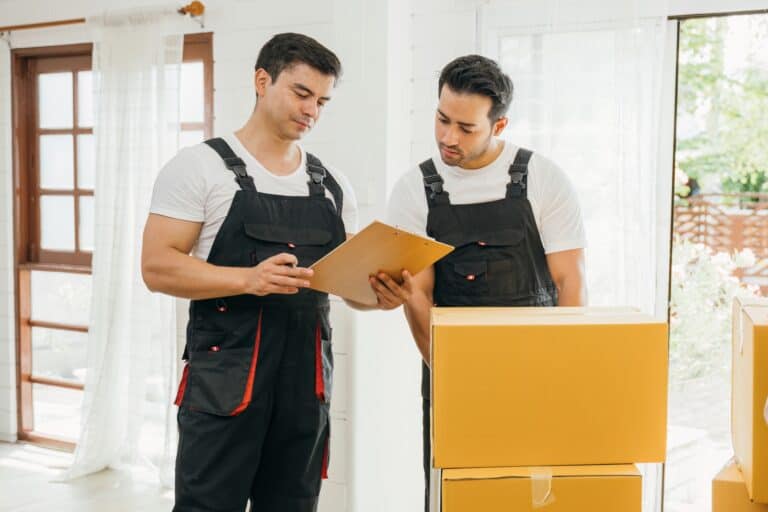Moving house can be as stressful for your pets as it is for you. Learn to navigate the ins and outs of managing pet transportation when moving house, with essential tips to keep your beloved companions safe and comfortable. This article will guide you through a seamless pet relocation experience without giving it all away, so you’re prepared for every step from your old front door to the new one.
Key Takeaways
- Prepare for your pet’s relocation 2-4 months in advance, including a pre-move vet check-up and updating their identification to ensure their well-being and manage any travel-related stress.
- Ensure your pet’s comfort during travel by choosing the right-sized carrier, incorporating familiar items for comfort, and addressing travel sickness possibly through vet-recommended medication or feeding strategies.
- Post-move, help pets adjust to their new home by maintaining consistent routines, introducing new spaces gradually, and observing their behaviour for signs of stress – small familiarities can greatly ease their transition.
Charting the Course for Your Pet’s Big Move
As moving day approaches, your pet depends on you to guide the process. Consider planning as your navigational tool throughout the move. It’s not just about moving pets in East London; it’s about moving with compassion and foresight. Experts suggest starting preparations 2-4 months in advance, especially since paperwork can be the most time-consuming aspect for pet owners.
Think of this guide as your roadmap to a stress-free moving experience that guarantees your pet’s well-being from the old home to the new one.
Pre-Move Vet Visit
Before moving day arrives, a vet visit is as significant as packing the final box. This check-up is not only about ensuring your pet’s health but also about discussing ways to keep them calm during the journey, especially if they have a history of travel-related stress.
It’s also smart to have a vet visit within a week of settling in to ensure their vaccinations are up-to-date and they’re adjusting well to their new home. Consider this vet visit the first leg of your pet’s journey to their new home.
Updating Identification
Imagine the worry if your furry friend slipped out during the chaos of moving to East London. To prevent heartache, update your pet’s microchip and ID tags with your new address before the house move. This simple but vital step guarantees that if your dog or cat embarks on an unexpected journey, they’ll return to the correct new home.
International Documentation
Travelling abroad? Your pet’s passport is as vital as your own. For international moves, timely vaccinations and health certifications are non-negotiable. The process can take a day or up to 28 days, so plan ahead and budget accordingly.
Carrying all relevant documents, including proof of vaccinations, eases border crossings …
Carrying all relevant documents, including proof of vaccinations, eases border crossings and keeps the tail wagging on foreign soil. The pet passport applies to dogs, cats, and ferrets, making them worldly companions ready to explore new territories with you.
Ensuring Comfort During Transit
Relocating to a new home might feel like a rocky path, but with proper preparation, it could feel like a peaceful walk in the park for your pets. Whether it’s a short drive or a cross-country haul, your pet’s comfort is paramount. From secure pet carriers to familiar scents, every detail counts in making the transition smoother.
Let’s examine strategies to ensure our pets feel safe and relaxed as they journey to unknown locations.
Choosing the Right Pet Carrier
The cornerstone of pet transportation is the pet carrier, which may also accommodate a litter tray if needed. It’s not just a box; it’s your pet’s travel sanctuary. Size matters – your pet should be able to stand, turn, and lie down with ease. Ventilation is key to keeping the air fresh and stress levels low.
Durable materials like nylon or polyester ensure that this mobile home withstands the rigours of travel. Don’t forget that securely fastening the carrier in the car is as important as your own seatbelt.
Familiar Comforts
Surrounding your pets with familiar comforts can be the difference between a tense journey and a relaxed one. Think of their carrier as a piece of the old house moving with them – include a favourite toy or blanket to provide a familiar scent. Having an emergency bag filled with toys, personal items, and cleaning supplies is equally important.
Sometimes, even a simple item like your worn shirt can offer immense comfort to your pet during these stressful times, just like their favourite toy.
Preventing Motion Sickness
Motion sickness can turn a journey sour for any traveller, especially our four-legged friends. If your pet is prone to travel sickness, consult your vet on the best course of action – it might include medication or specific feeding strategies.
Feeding a light meal a few hours before leaving can prevent upset stomachs. Avoid feeding immediately before the trip to minimise stress.

Seamless Arrival: Helping Pets Adjust to Their New Home
After the wheels stop rolling, the real journey begins. Helping your pet adjust to their new home is about creating a sanctuary amid the unfamiliar. It’s about allowing exploration and maintaining comfortable routines. With patience and love, you can ensure your furry friend’s transition is as smooth as the floors in your new abode.
Let’s outline the steps to guide your pet in confidently adjusting to their new environment.
First Few Weeks at the New House
The first few weeks in a new house can be overwhelming, but for pets, a safe room stocked with their favourite things can be a haven. Set up a space with their own bedding, bowls, and toys right from the start. This familiar setup will be their go-to spot as they gradually get used to the new environment.
For pets who love spending time outside, such as cats, beginning with one room can provide a sense of security as they adjust at their own speed to being a cat indoors.
Gradual Exploration
As your pet becomes curious about their new home, allow them to explore at their own pace. A designated room with their bed and favourite toys can serve as a retreat during this transition period. For dogs, a similar setup to the one they had in the old house can provide great comfort.
Keep in mind that pheromone diffusers can be remarkably effective at soothing pets as they get used to their new environment.
Maintaining Old Routines
Amidst the chaos of moving, keeping up with familiar routines is a soothing balm for a pet’s anxiety. Consistent feeding, walking, and playtime schedules anchor them to a sense of normalcy. Introduce new spaces gradually but maintain the old routine to help your pet feel secure and adjust swiftly to their new home.
It’s these small touches of the familiar that can comfort them during a big change.
Coordinating with Professional Movers
When it comes to moving house, two legs or four – everyone’s in it together. Working with professional movers who understand the unique needs of pet transportation can make the experience smoother for everyone involved. From all the packing to the final goodbye to the old house, making sure your pet is catered for is a key element of a stress-free move.
Let’s manoeuvre through the moving process with movers who give your pet the attention and care they deserve.
Finding a Pet-Friendly Moving Company
Not all heroes wear capes – some come equipped with pet-friendly moving services. Choosing the right moving company is pivotal; after all, they’re not just moving your sofa, they’re moving your pet’s world. Staff trained in pet handling and care ensure the furry members of your family are in safe hands.
Plus, a removal company that’s transparent about pet policies and updates you on your pet’s status throughout the move is invaluable.
Day-of Moving Strategy
On the big day, ensure your pet has a stress-free haven away from the hustle and bustle. A specific room or a crate with their bed, toys, and essentials keeps them secure while movers do their work. This approach not only delivers comfort to your pet but also peace of mind for you, assuring their safety during the transition.
Aftercare Post-Move
Once the dust settles and the boxes are unpacked, aftercare for your pet is crucial. Here are some tips to help your pet settle into their new home:
- Provide fresh water and return to normal feeding routines.
- Use recognizable bedding and toys to help them feel comfortable and familiar.
- Keep an eye out for any stress signals and offer extra cuddles and care.
- Give them time to adjust and settle into their new environment.
Special Considerations for Exotic and Small Pets

Moving with a menagerie? Exotic and small pets have their own set of needs during a move. From preserving habitat stability to managing their distinct stress responses, it’s crucial to comprehend and cater to their needs.
Let’s delve into the intricacies of moving the less traditional members of your pet family.
Transporting Tanks and Cages
The abode of your aquatic or small furry friends – be it a tank or cage – requires meticulous attention during a move. For fish tanks, ensure they’re emptied properly, with the fish tank water and inhabitants safely stowed away. Dark, enclosed containers can help small mammals and fish alike feel secure during transport.
Once at the new home, reintroduce them to their habitats gradually, keeping a close eye on their adjustment.
Handling Exotic Pet Stress
The stress of a move isn’t just a human experience; our exotic pets feel it too. Birds may become agitated or resort to feather plucking as a response to their changing environment.
Identifying these signs and upholding their routines can offer a sense of stability during this taxing period.
Settling In Your Small Companions
Once the journey is over, setting up your exotic or small pet’s permanent habitat as quickly as possible is essential for their sense of security. Familiar items from their previous home can ease the transition and help them settle into their new surroundings with ease.
Navigating Long-Distance and International Moves with Pets
The complexities of long-distance and international moves require additional layers of planning and consideration for your pets. Whether it’s a cross-country adventure or a leap across oceans, ensuring your pet’s well-being throughout the journey is critical.
From prolonged car journeys to fresh quarantine rules, let’s examine how to make this international transition as comfortable as possible for your pet.
Extended Travel Preparations
Long-distance travel can be taxing on pets, so breaks are as important as the miles covered. Regular stops allow pets to stretch and relieve themselves, and they’re a chance to provide cool water and a snack.
Travel training can further aid pets in becoming comfortable with extended periods in their carriers, simplifying the journey for them.
Crossing Borders with Your Furry Friend
Crossing borders with your pet means navigating a maze of regulations. Delve into the pet import rules of your destination country and ensure all health certifications and documentation are in order. Vaccinations, microchips, and potentially quarantine periods could be part of the process, so you must be prepared for these stipulations.
Arranging Overseas Pet Transportation
For the international jet-setting pet, a relocation service can provide peace of mind. These specialists handle logistics, from permits to pet-friendly flight bookings, ensuring a stress-free journey for your companion.
TIP
Enlisting the expertise of a removal company can lighten the load of the complexities associated with transporting pets overseas.
Summary
As we reach the end of our guide, remember that moving house with pets can be a journey filled with love and care when planned correctly. From ensuring their health with a pre-move vet visit to making their transit comfortable and helping them adjust to new surroundings, every step you take is a stride towards a happy, stress-free new beginning for your pet. Embrace this journey with confidence, and let the shared adventure strengthen the bond between you and your cherished companion.
Frequently Asked Questions
Do pets need their own special passport for international travel?
Yes, pets need a special passport for international travel that includes their health information and proof of vaccinations. Make sure to plan ahead for the processing times and costs.
How can I help my pet adjust to their new home?
Help your pet adjust to their new home by creating a safe space with familiar items and maintaining their regular routines, which will help them feel secure and comfortable.
What should I do if my pet gets motion sickness during the move?
Consult your vet for motion sickness prevention options and feed your pet a light meal a few hours before travel. Avoid feeding them right before you set off for the move.
Can I move my exotic pet, like a bird or fish, using a regular moving service?
It’s best to use a moving service specialising in pet transportation for your exotic pet, like a bird or fish. They can ensure your pet’s safety and comfort and are equipped to handle their specific needs.
What do I need to do to prepare my pet for a long-distance car journey?
To prepare your pet for a long-distance car journey, plan for regular breaks, provide a comfortable carrier and consider travel training for pets prone to stress or motion sickness. Also, ensure they have access to water and their usual food.







